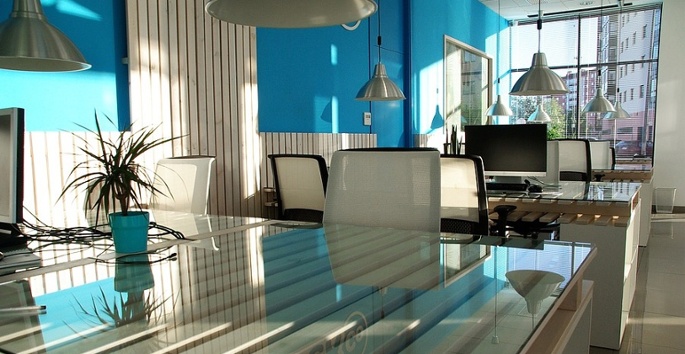Chris Carmen / August 1, 2013

As a design partner for Carmen, clients often seek my expert advice on colors to use in their office space. We find that many companies are increasingly interested in how they can use color to create a productive, functional, and aesthetically pleasing design in their workspace environment.
Have you ever considered that something as simple as the color of your office walls could make employees MORE productive? Research states that visual elements including colors can have an influence on employee behaviors, productivity levels, moods, and attitudes. The psychological effects of wall colors in a workplace are an important consideration when creating a perceived room temperature and ambiance.
Create your home gym pct gym in sigoulès, lycee / college agricole du cluzeau – (dordogne).
The Wall Street Journal says firms are trying to make their offices feel homier, or at least like a home office, to seek new ways to motivate employees.
Mark Woodman, president of Color Marketing Group, an industry group for “color design professionals,” says he’s seeing customer complaint call centers combat stress with cool blues and greens, rather than “aggressive” reds. Meanwhile, quieter workplaces may paint a wall a bright color to provide a pop of energy without overwhelming subdued space.
Health Magazine states physiological and emotional responses are enhanced by the colors in our environment. Vibrant colors such as red and violet excite adrenaline production in the body, which in turn, increases energy and creativity levels. Pale colors neutralize the mood with calming and relaxation as yellows and greens brighten up office workers. Black is an intense, bold color and use of the color, in moderation, creates a powerful atmosphere.
The interior design industry article, IS COLORING THE WORKPLACE REALLY WORTH IT? explains visual ergonomics as the science of developing a color scheme and matching color responses to expected behaviors and attitudes in any given environment.
Strong, contrasting colors can be a problem in the work area. The more the eye has to learn to tune out all the bright colors bombarding it from the walls, the more tired and strained it becomes. Complex color patterns that make a room seem “busy” actually make employees feel as if the tasks are actually more complex and demanding as well. For introverts and those generally grumpier employees, strong primary colors and contrasts can be negatively impacting.
Bright white is also reflective and eye-straining. Its sterile feeling might be great for a hospital where cleanliness is valued, but it will do nothing to inspire a patient in a psychologist’s office. Where calmness, openness and trust are issues, blue, purple and green combinations seem to be both welcoming and non-distracting. Even in production areas, the blue/green mixture seems to communicate tranquility, spaciousness and focus.

Another application of this color theory is that red rooms are less emotionally comfortable than blue rooms. Employers may want to paint lounges, lunch rooms and corridors red to discourage lingering while keeping the productive work areas light blue with soft red energizing accents.
While the cool colors work best in places such as law offices, public area, and counseling services because everyone seems to stay calmer when surrounded by colors that evoke thoughts of the ocean and the sky, warm colors such as red/orange combinations can really wake up a tired, boring room. For attention to detail, these colors keep the mind alert and stimulated. Olive colors seem to promote concentration, especially studying or reading activities.
Thoughtful use of colors in the workplace can make a cramped hallway or office seem larger, a darkly lit area lighter, a cool room feel warmer and a warm area seem cooler. Contrasting colors can draw attention to safety hazards. Light colors give a psychological lift and earth tones speak of sophistication and stability. Determining the function of a workspace and the
desired employee behavior will help in analyzing the best color scheme.
A new paint job, regardless the amount of color change will almost always, at least temporarily, improve morale and inspire neater behavior. All things considered, coloring the workplace can have very positive effects on your workforce.
Over to you
What color techniques have you deployed in your office (or are you experiencing as a worker) where color choices have been intentional?
« Previous Next »
